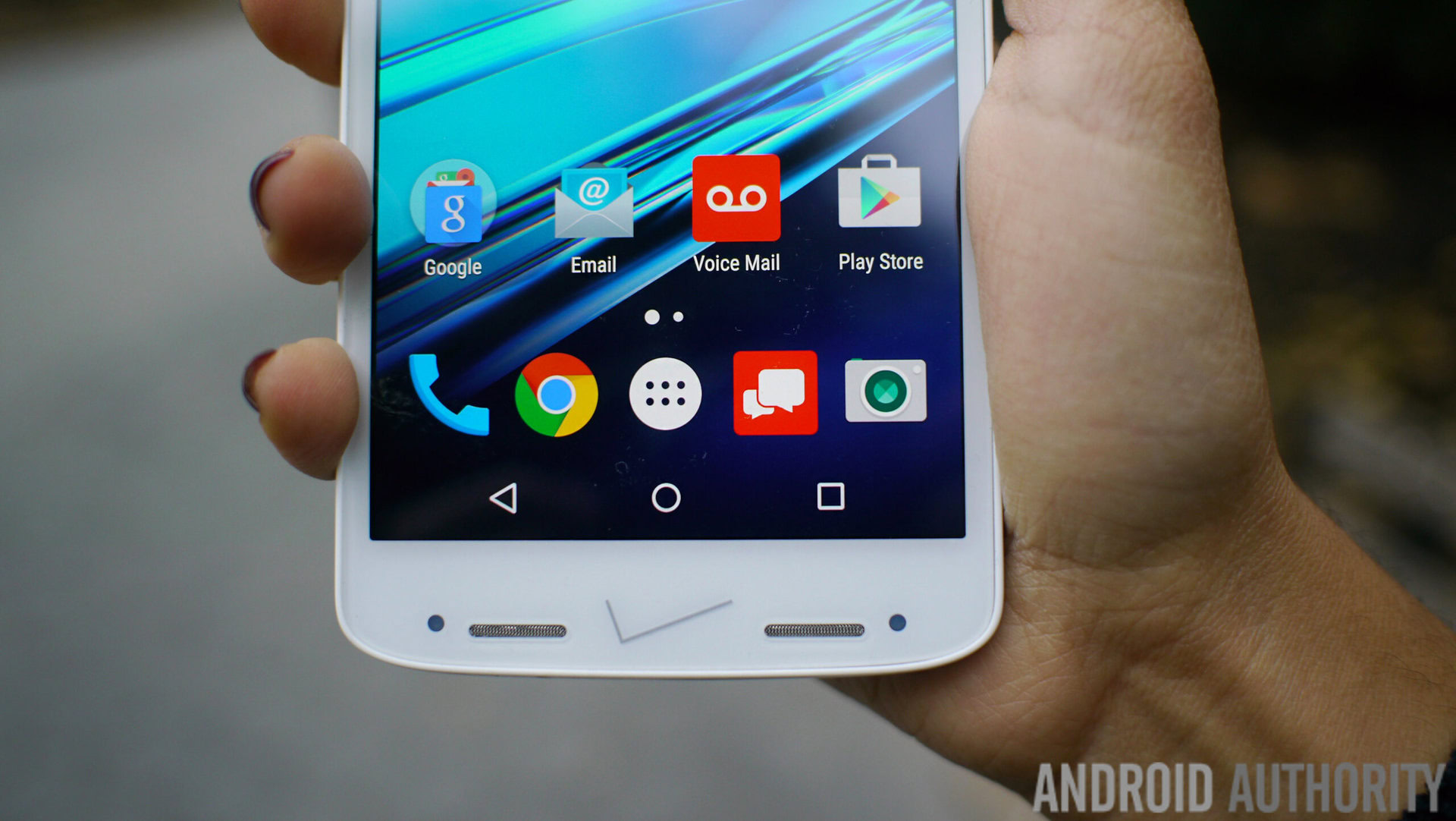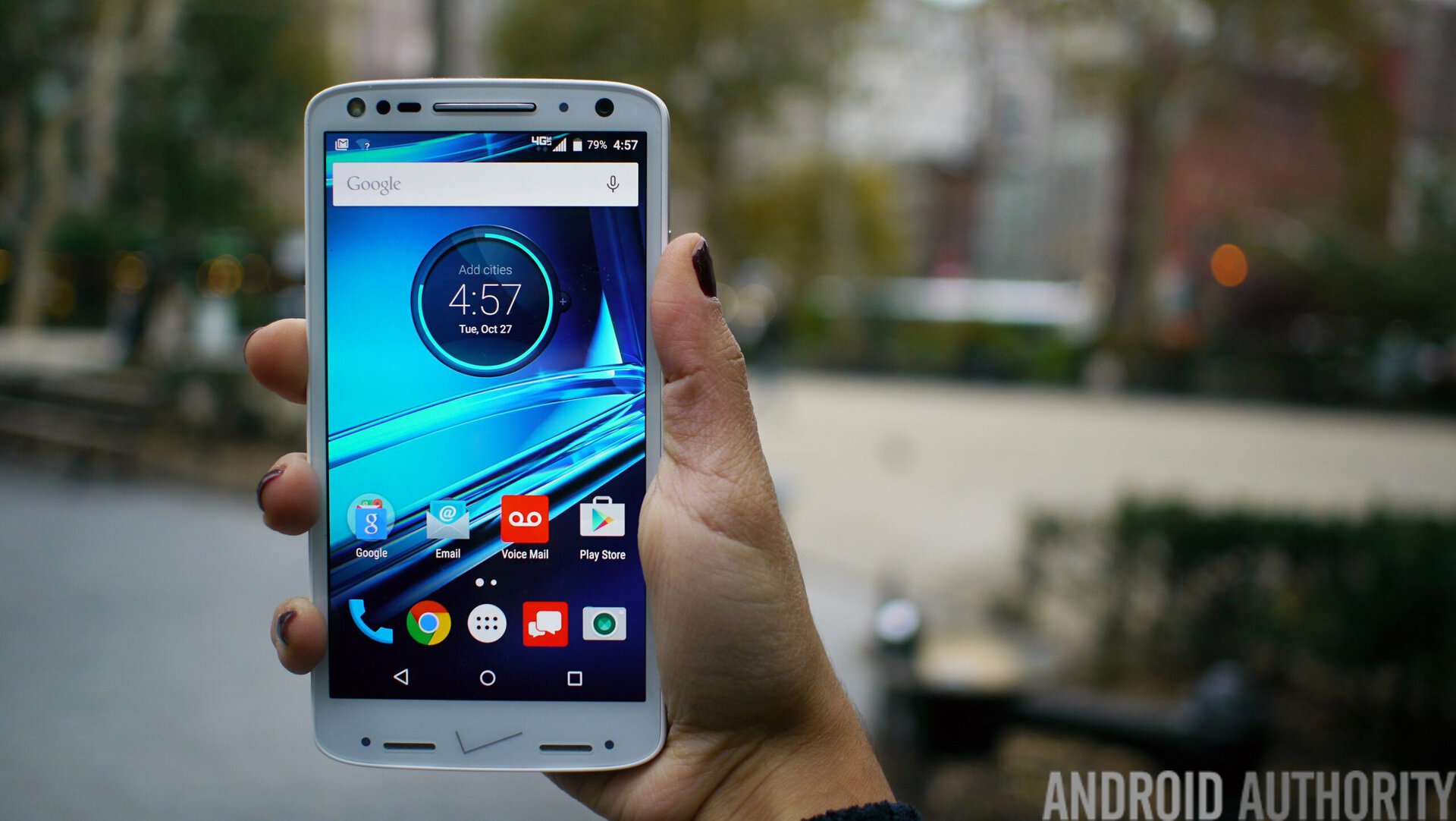Affiliate links on Android Authority may earn us a commission. Learn more.
How does Motorola's new ShatterShield technology work?
Published onOctober 28, 2015

Just yesterday, Verizon took the wraps off the brand new Motorola Droid Turbo 2 and Motorola Droid Maxx 2. While the latter is covered in a strong panel of Gorilla Glass 3, the former, which is the higher-end of the two, sports what Motorola is calling its new ShatterShield technology. What does that mean? The company walks us through just what makes up the Droid Turbo 2’s display.

Motorola says the Turbo 2’s display consists of an integrated system of five layers that are designed to absorb shock and never shatter. Supposedly three years in the making, Moto ShatterShield consists specifically of these five layers:
- It starts with a rigid aluminum core that provides structural integrity and durability.
- On top of that, we’ve added in a stunning AMOLED flexible display. Using a flexible display absorbs shock and makes it possible to flex during a drop versus breaking like most screens.
- Then, a dual touch layer with redundancy was created to help it survive accidents. Often, after a drop, the touch layer can go bad and your touch doesn’t work as well. So we‘ve added a failsafe mechanism.
- The next layer is the interior lens which provides a clear protective shield that won’t crack or shatter.
- Lastly, we topped it off with an exterior lens that has a unique hardcoat that helps protect the display against normal wear and tear.
And they’re not kidding. Take a look at the video attached below. CNN actually put the Turbo 2 to the test, and the results were incredibly impressive. Not only did they drop the phone numerous times on concrete and gravel, they also ran over the phone, screen up, with a bicycle and a horse’s hoof. The phone’s screen actually dented before it shattered or cracked. Crazy, right?
Having a phone with a shatterproof screen may be great in some scenarios, but how great is the screen when you’re not dropping it? The Droid Turbo 2 has a big 5.4-inch Quad HD AMOLED display. But because there are so many layers between the display and the glass, the display won’t be able to shine as much light through all of those layers. According to Ars Technica, there is some visible space between the clear front panel and the display, which results in a device that isn’t as bright or as clear as other smartphones with higher-end displays. “It’s a gray, muddy mess”, says Ars’ Ron Amadeo.
Motorola says it will bring Moto ShatterShield to other devices sometime in the near future. We just hope the company can improve this technology before that happens. What are your thoughts? Would you rather carry a smartphone that has a “shatterproof” display, even if that means it won’t be as clear as others on the market? Be sure to let us know your thoughts in the comments below.
[related_videos title=”Related Videos” align=”center” type=”custom” videos=”652214,651385,647082,646098″]